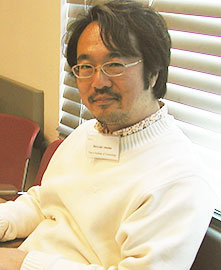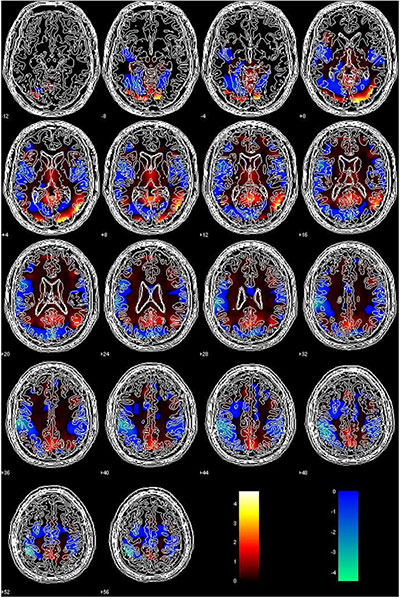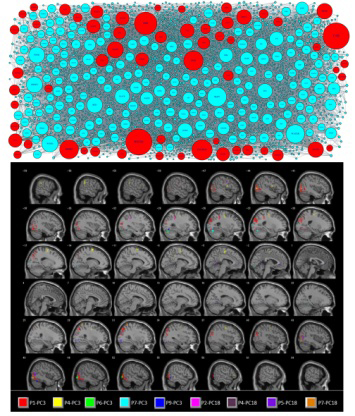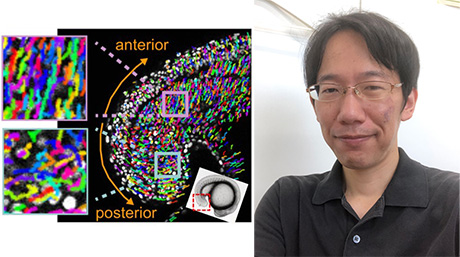Life Science and Technology News
【Labs spotlight】 Hiroyuki Akama Laboratory(~2024.3)
Exploring the mysteries and the possibilities of the human brain
The Department has a variety of laboratories for Human Centered Science and Biomedical Engineering, in which cutting-edge innovative research is being undertaken not only in basic science and engineering but also in the areas of medicine, pharmacy, agriculture, and multidisciplinary sciences.
This "Spotlight" series features a laboratory from the Department and introduces you to the laboratory's research projects and outcomes. This time we focus on Hiroyuki Akama Laboratory.
*March 31, 2024:Associate Professor Akama retired from Tokyo Tech.

Human Centered Science and Biomedical Engineering
Associate Professor Hiroyuki Akama![]()
| Degree | PhD 1992, University of Paris I Pantheon-Sorbonne |
|---|---|
| Areas of Research | Brain Imaging (fMRI), Computational Neurolinguistics, Cognitive Linguistics, Epistemology |
| Keywords | fMRI, Multi-voxel Pattern Analysis (MVPA), Machine Learning, Complex Networks, Embodiment |
| Website | Hiroyuki Akama Laboratory (Japanese) |
Research interest
Our Goal
Understanding how the human brain categorizes information through signs and language is a key part of developing computers that can ‘think‘ and ‘see‘ in the same way as humans. Our laboratory explores the human brain by using fMRI with machine learning and graph theoretical analysis to lead our findings to a technological development.
I) Conceptual Modeling in Neuroimaging

Some open theoretical questions are addressed on how the mind and brain represent and process concepts, particularly as they are instantiated in particular human languages. Recordings of neuroimaging data should provide a suitable empirical basis for investigating this topic, but the complexity and variety of language demands appropriate data-driven approaches. Multivariate classification techniques (MVPA) have proven to be powerful tools for distinguishing neural and cognitive states in fMRI. Our laboratory attempted a classifier training and performance for discriminating the semantic categories and the languages with different monolingual and bilingual populations. MVPA elicited satisfactory accuracies over the threshold value for significance, but more noteworthy is that in spite of a salient difference in the signal amplitude, latency and the individual modeling precision, it was discovered that the mean accuracy of the prediction models could be simulated by a positive gamma function peaking at 7 seconds after stimulus onset with a FWHM (Full Width at Half Maximum) of 5.7 seconds. Based on these findings, we are developing a suite of methodologies that holds the promise of being able to holistically elicit, record and model neural processing during language comprehension and production.
II) A network connectivity approach using MVPA of fMRI

Multi-Voxel Pattern Analysis (MVPA) in functional magnetic resonance imaging (fMRI) studies is considered effective for studying how the human brain represents the meanings of words, when combined with a representational space of language corpus. However, few attempts have been made to use word association norms as a semantic network to explore how lexical-relatedness is measured as a similarity in neural activation patterns. Now, we have developed an original distance definition for graphs, called the Markov-inverse-F measure (MiF), and measured its effectiveness for predicting a neural activity recorded during conceptual processing in the human brain. Reconciling both geodesic computation and co-occurrence adjustment, MiF provides a linguistic graph information of word association norms (EAT). When applied to the fMRI datasets of Mitchell et al.'s Science research (2008), our model could obtain with the best predictive accuracy a scalar parameter that specifies the degree to which each voxel in the brain is activated by each word. A new fMRI decoding technique was created to elucidate the relationship between semantic and neural networks in computational neurolinguistics.
Research findings
Selected publications
- [1] Hiroyuki Akama, Brian Murphy, 2016. Emerging Methods for Conceptual Modelling in Neuroimaging, Behaviormetrika, Springer, DOI: 10.1007/s41237-016-0009-1
- [2] Hiroyuki Akama, Maki Miyake, Jaeyoung Jung, Brian Murphy, 2015. Using Graph Components Derived from an Associative Concept Dictionary to Predict fMRI Neural Activation Patterns that Represent the Meaning of Nouns, PLoS ONE, DOI: 10.1371/journal.pone.0125725.
- [3] Miaomei Lei, Hiroyuki Akama, Brian Murphy, 2014. Neural basis of language switching in the brain: fMRI evidence from Korean-Chinese early bilinguals. Brain and language, Elsevier, 2014, 138. doi:10.1016/j.bandl.2014.08.009.
- [4] Hiroyuki Akama, Brian Murphy, Lei Miao Mei, Massimo Poesio, 2014. Cross-participant Modelling Based on Joint or Disjoint Feature Selection: An fMRI Conceptual Decoding Study, Applied Informatics, Springer, doi:10.1186/2196-0089-1-1
- [5] Hiroyuki Akama, Brian Murphy, Li Na, Yumiko Shimizu, Massimo Poesio, 2012. Decoding Semantics across fMRI sessions with Different Stimulus Modalities: A practical MVPA Study, Frontiers in Neuroinformatics, doi: 10.3389/fninf.2012.00024.
- [6] Hiroyuki Akama, Cabanis(Pierre-Jean-Georges), Dictionnaire de la Mort (Sous la direction de Philippe Di Folco), Larousse, France, 2010, p.165-167
Contact
Associate Professor Hiroyuki Akama
Room 614, W9 building, Ookayama campus
E-mail : akama@dp.hum.titech.ac.jp
*Find more about the lab and the latest activities at the lab site (Japanese)![]() .
.





